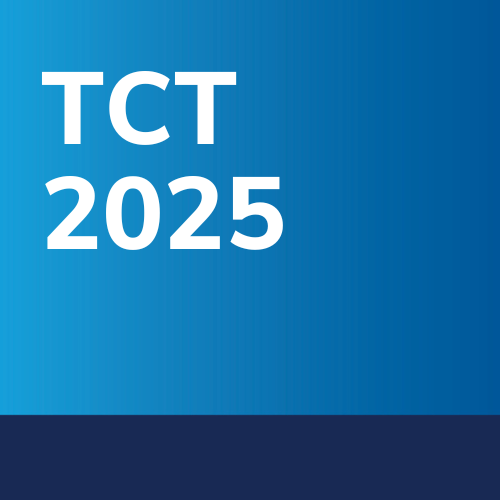A new study suggests that artificial intelligence (AI) could open up new avenues for sepsis research, researchers reported late last week in JAMA Network Open.
The study, conducted by researchers and clinicians from Harvard Medical School,…

A new study suggests that artificial intelligence (AI) could open up new avenues for sepsis research, researchers reported late last week in JAMA Network Open.
The study, conducted by researchers and clinicians from Harvard Medical School,…

Percutaneous transseptal mitral valve replacement (TMVR) using the SAPIEN M3 system effectively reduced mitral regurgitation (MR) with low rates of complications and mortality in patients who were not candidates for conventional surgery or transcatheter edge-to-edge repair (TEER), according to results of the ENCIRCLE trial presented at TCT 2025 and simultaneously published in The Lancet.
The trial involved a total of 287 patients from the U.S., Canada, Europe, Israel and Australia who had MR ≥3+, NYHA Class ≥II, and were unsuitable for surgery or TEER due to clinical, anatomic or technical considerations. The balloon-expandable, dedicated SAPIEN M3 mitral transcatheter heart valve was implanted in each patient and follow-up was conducted at 30 days, six months and one year.
In overall findings, the primary endpoint – the composite of all-cause mortality and rehospitalization for heart failure at one year compared to a pre-specified performance goal of 45% – was 25.2%. All-cause death and heart failure hospitalization rates were 13.9% and 16.7%, respectively. Additionally, improvements in MR grade were observed across all patients, with more than 95% having ≤1+ total MR at 30 days and one year. Researchers also noted the TMVR system had a procedural safety profile similar to TEER and that patients experienced clinically meaningful and durable improvements in symptoms and quality of life.
“Percutaneous transseptal TMVR had a low mortality rate while providing a significant reduction in [MR] severity and providing meaningful and durable improvements in functional status and quality of life,” said David Daniels, MD. “These findings will help guide clinical practice by providing an alternative treatment option for patients who are not suitable for conventional surgery or TEER procedures.”
Additionally, Daniels and colleagues say their findings could allow for “future reintervention with percutaneous transseptal mitral valve-in-valve implantation in the event of structural valve deterioration,” noting that “reintervention after failed TEER remains a major limitation.”
Clinical Topics:
Invasive Cardiovascular Angiography and Intervention, Valvular Heart Disease, Interventions and Imaging, Interventions and Structural Heart Disease, Angiography, Nuclear Imaging
Keywords:
Transcatheter Cardiovascular Therapeutics, TCT25, Angiography, Heart Valve Diseases

Zelooperz has been one of the most flavorful rappers of the past decade. His name has lived in the underground rap scene for years — a corner of music where his consistent switch-ups and diverse sounds fit like a perfect puzzle piece….
COLUMBUS, Ohio – In a new study, chemists have developed a novel framework for determining how effectively carbon monoxide sticks to the surface of a catalyst during conversion from carbon dioxide.
This…

LONDON, Oct 27 (Reuters) – Climate change is one of the toughest opponents facing any athlete, warns Brazilian soccer player Tamires Dias, one of around 40 elite sportsmen and women involved in the launch of a new global campaign that will…

Anthony Edwards is averaging 25.7 ppg this season for the Wolves.
Minnesota Timberwolves star Anthony Edwards will miss at least one week with a strained right hamstring, after the sixth-year shooting guard was sidelined by the injury in the…

The only time Mark DeLoura’s cheery demeanour dips is when I ask him about the teaser campaign. The news that the Game Developer’s Conference was becoming the “GDC Festival of Gaming” was announced with CGI teaser videos showing…

Children can sometimes develop health, behavioral, and attachment issues that persist when their needs are not met by their caregiver. New from eNeuro, Arie Kaffman and colleagues at Yale University School of Medicine explored…

Do you remember all that went down in the virtual realm over the last fortnight? Did you add anything to your Steam library this week? Have you gone down any rabbit holes in the last seven days? No? Would you like to? Do you have a…